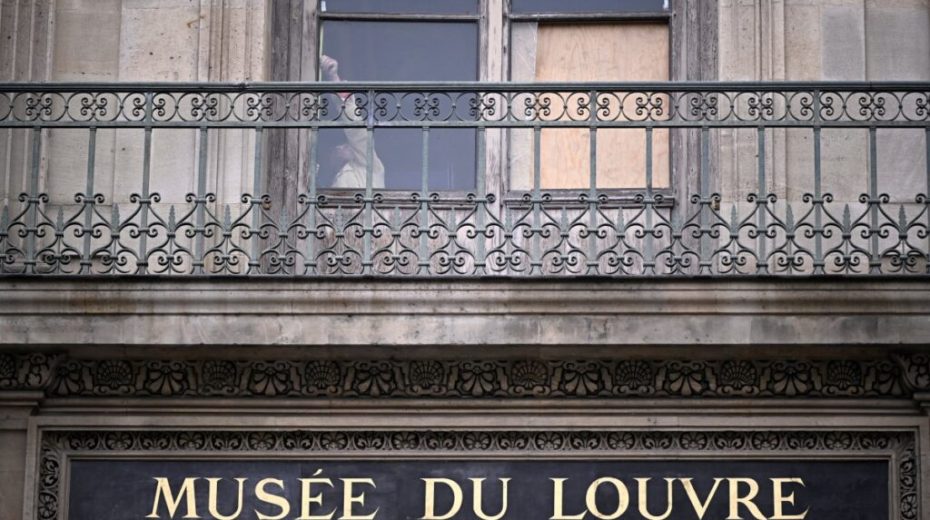
The entire nation of France has been left stunned following the shocking burglary that occurred on the morning of Sunday, October 19th, at the Louvre.
Nine pieces of crown jewels were taken with alarming ease; eight remain missing. President Macron has vowed to use every means to retrieve these invaluable historical relics, yet his resolve cannot erase the astonishing lapses that facilitated this crime.
This was not the Louvre’s first encounter with dramatic thefts. Often hailed as “the most beautiful museum in the world,” this palace-museum holds invaluable treasures of global art and history. Leonardo da Vinci’s iconic portrait “La Gioconda” has been targeted multiple times in the past.
On this occasion, it was jewellery that was purloined.
The newspaper Le Monde has shared the list along with images of the stolen items. Among the loot, the crown of Empress Eugénie, consort of Napoleon III, was taken and later abandoned during the thieves’ escape; its condition is currently “under review.” Also missing are her pearl tiara, a diamond corsage bow, a reliquary brooch, a complete sapphire set with a tiara previously owned by Queens Marie-Amélie and Hortense, and a magnificent emerald set that belonged to Empress Marie-Louise, wife of Napoleon I.
After the initial shock wore off, details surfaced about the theft’s circumstances, which occurred just after the museum opened, between 9:30 and 9:37 a.m.
Footage of the burglary is now being shared on social media platforms. Surveillance videos and photos thoroughly document the event, effectively creating a detailed guide for anyone intending to replicate the heist.
A truck was parked on the Seine’s banks beneath the renowned Galerie d’Apollon, home to the Crown Jewels—which are remnants of the lavish jewellery from France’s royal dynasties, surviving only a handful of past revolutions. The vehicle was carefully positioned, with construction cones placed around to mark off the area. Using a hoist-mounted basket, two of the four intruders climbed up to a window in the gallery, forcibly entering through it with an angle grinder in a rather rudimentary fashion. It took them just seven minutes—a span that feels both surprisingly brief and oddly prolonged—to access a display case and abscond with nine precious pieces.
Since the theft became public, several troubling facts have emerged. Critics have highlighted the poor condition of the windows in the Apollo Gallery, which barely posed any real obstacle to the thieves. It is probable that other critical parts of the museum suffer from similar neglect.
Another shocking finding revealed that the display cases for the jewels were replaced in 2019 with supposedly ‘state-of-the-art’ models, which ultimately proved far less secure than the previous ones. At that time, Louvre officials moved the Second Empire jewels—previously exhibited in different rooms—to the Apollo Gallery to be shown alongside those from the Ancien Régime already present there. Midway along the prestigious gallery stood a reinforced glass display case installed in the 1950s to protect the most valuable items. This apparatus could be concealed within a hidden safe beneath its decorative base at the slightest sign of danger. Had this system been maintained, it is very likely the jewellery would still be housed in the Louvre.
Beyond the physical shortcomings, human accountability is at issue. The former protocol mandated immediate removal of the display case upon any alert. However, this did not happen on that Sunday morning. Instead, officers were instructed to “secure the people.” This led to a bizarre scene caught on phone cameras: intruders had a full seven minutes to fill their bags while no one intervened physically.
In this context, Culture Minister Rachida Dati’s expression of gratitude toward the security guards for their swift reaction is hard to comprehend. While not wishing to criticize staff simply following orders, was a public ceremony of thanks really fitting given eight jewels have simply disappeared?
It has also come to light that the Louvre’s security chief, Dominique Buffin, appointed in 2021, was selected based more on fulfilling the push to feminize leadership roles in cultural institutions than on qualifications.
This is France—a country long plagued by a culture of entrenched institutional negligence. Neither Buffin nor Dati is expected to step down.
Didier Rykner, a renowned art historian and editor-in-chief of La Tribune de l’Art, which tracks attacks on France’s cultural heritage, has published an explosive report exposing the astonishing series of failures that enabled the Crown Jewels’ theft. Yet, some on X accuse him of “playing into the hands of the far right” for calling out the Ministry and Louvre’s negligence.
The entire affair appears profoundly disingenuous. President Macron solemnly vowed: “We will find the works and the perpetrators will be brought to justice.” Can we trust these words? Is it possible to believe in a justice system that seems incapable of executing its rightful authority?
Recently, Louis XX, claimant to the French throne, descendant of Louis XIV, and head of the elder Bourbon branch, expressed concerns multiple times in the French press about the nation his ancestors built falling apart. Following the burglary announcement, Jean, Count of Paris, descendant of King Louis-Philippe and leader of the younger Bourbon-Orléans branch, issued a statement lamenting the loss of these jewels—some once owned by his direct female forebears. This theft can be read as a symbol for the country’s decline, incapable of protecting or transmitting its heritage due to the failing and careless governance.
Once the seat of royal authority, the Louvre now stands as a metaphor for the entire nation, one that anyone can breach to destroy centuries of history and national pride.
Original article: europeanconservative.com




